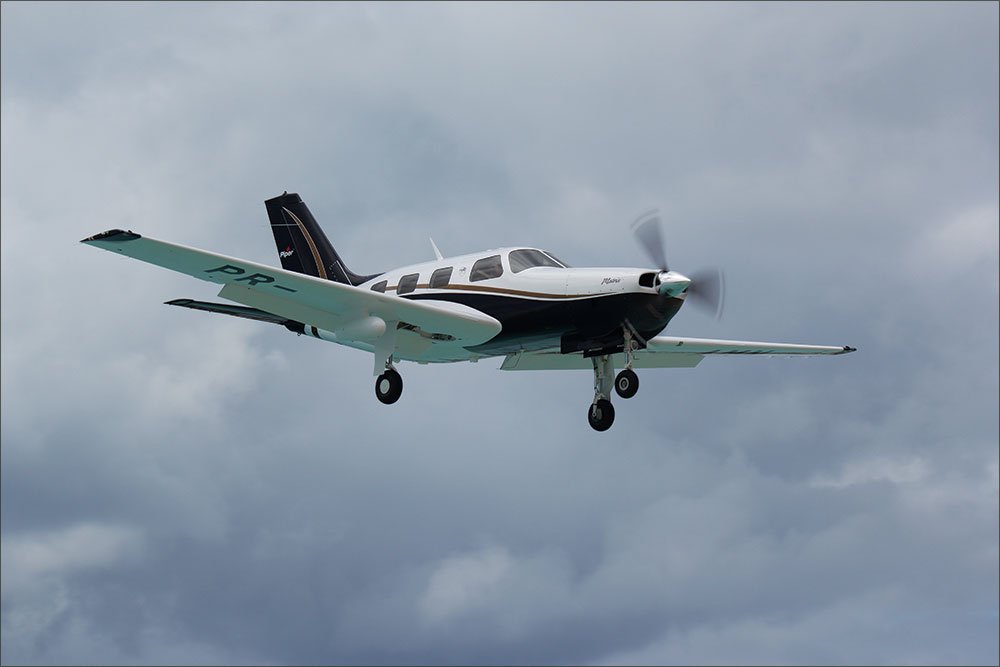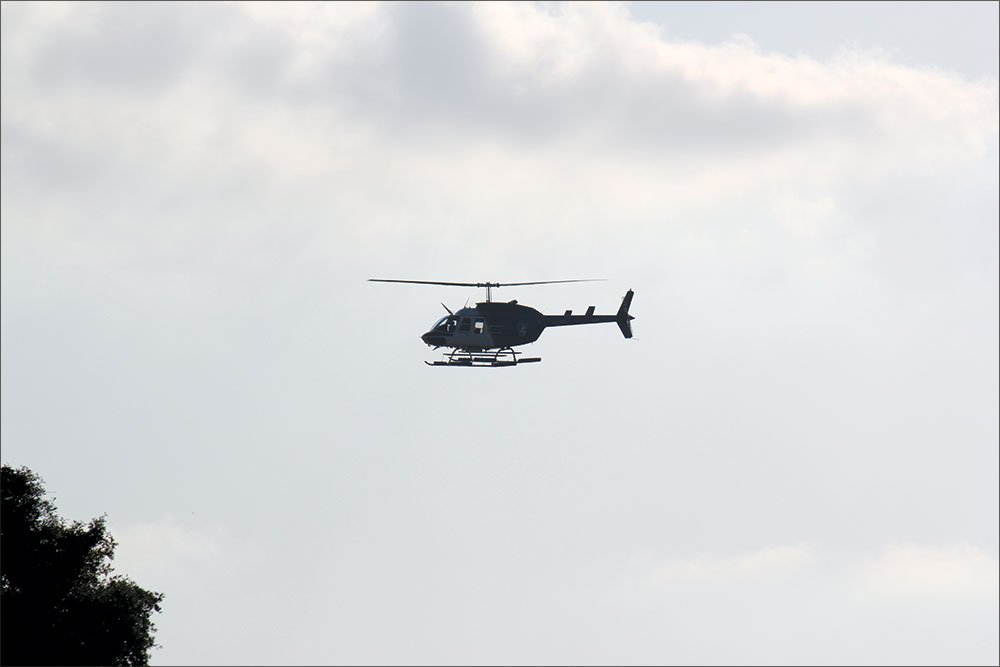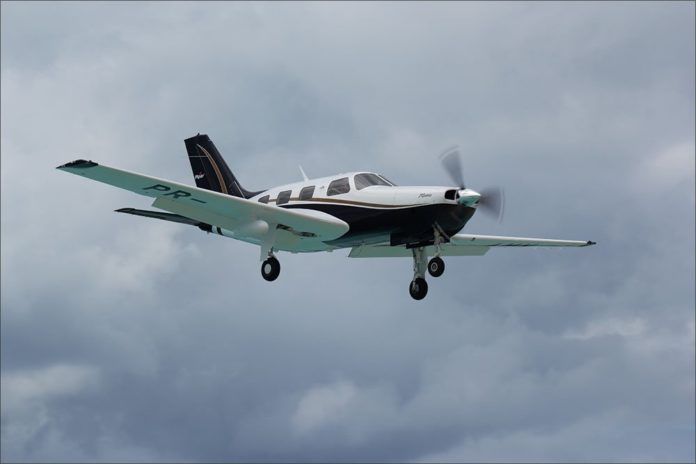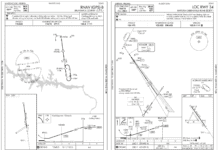Standing to get a closer view of my tower’s radar display, I said, “That doesn’t look right.”

Somewhere in the dense, ragged and choppy 300-foot overcast outside the tower windows, there was a Piper Matrix inbound on the ILS. Well, supposedly on the ILS. His target was crossing the final approach fix several hundred feet lower than published and a half mile to the right.
The minimum safe altitude alarm started chirping ominously as I keyed my mic to let him know. “Piper Six Eight Papa,” I said. “Low altitude alert. Check altitude immediately. Altimeter three-zero-zero-one. Final approach fix altitude was two thousand. Verify you’re established on the approach. It appears you’re right of course.”
“Roger.” There was no tone of alarm in his voice. And, there was no change in his course either. In fact, he continued his descent, sinking lower into the muck and continuing well below glideslope.
My gut was telling me to keep a close eye on this guy. This situation was quickly highlighting the conundrum we air traffic controllers face: among all the services we provide for a pilot, flying their plane isn’t one of them. Nonetheless, our training, experience, and resources make us far more than just passive observers.
Raising the Alarm
The first thing we can do? Communicate that something appears wrong, either to the pilot or possibly to other controllers. Timely, accurate safety information is central to our business.
If a plane reports a flock of birds persistently flitting around on short final, we’ll pass that on to subsequent aircraft and put bird advisories on the ATIS.
Does an IFR airplane have an unidentified VFR target bearing down on him? We’ll issue traffic calls, safety alerts or even vectors to the IFR aircraft. Is a student pilot flying erratically on his first solo? We’ll warn subsequent controllers to keep an especially close eye on the struggling newbie.

I’d already voiced my concerns about the deteriorating approach to the Matrix pilot. Now my buddy down in radar called me on the landline. He had given the Matrix good vectors to the ILS, but he was also watching the developing problem and wanted to ensure I was aware of it. “Man, are you watching—?”
“Oh, yeah, I’m watching. I even called him about it.” I’d seen plenty of botched approaches before, but never had a pilot persisted this long into one in IMC conditions. The Matrix was approaching two miles from the field, still descending well off to the right and somewhat below the glideslope.
I again advised the pilot of my observations. My concern was again rewarded with a nonchalant, “Roger.”
Making the Call
Dispensing information does nothing if the person receiving it can’t—or won’t—act on it. I’m sorry to disappoint the conspiracy theorists out there, but ATC can’t just remotely commandeer a civilian aircraft from the ground and steer it out of danger, much as we might occasionally want to.
Imagine yourself and a friend standing on a city sidewalk. He bends down to tie his shoe. Suddenly a car loses control and careens towards you both. You see it, but your friend still has his head down. Do you tap your friend on the shoulder and calmly tell him about it, or do you grab him and pull him out of the way? Actions matter more than words when things go critical.
Not liking the Matrix situation so far, I grabbed my handset to instruct him to execute a missed approach. However, as I did so, I noticed his target begin correcting back towards the localizer. His altitude was now reasonably well aligned with the published glideslope. Had he salvaged the approach? It appeared so. I lowered my handset and gave him the benefit of the doubt.
“Here he comes,” I said to my ground controller. We scanned the ragged clouds above the runway threshold. I glanced at the radar target’s location. The aircraft should be visible at his current distance and altitude. We waited anxiously.
The Matrix burst out of the cloud deck, not lined up with the runway, but instead lined up perfectly with our crowded general aviation ramp. He swooped three hundred feet above parked airplanes. His nose was pointed right at our tower, less than a half mile away, clocking 120 knots. You do that math. My ground controller took two big steps back from the suddenly fragile windows.
This had gone on long enough. “Piper Six Eight Papa, go around. Maintain two thousand. Fly heading one-eight-zero.” In the back of my mind, I hoped even that simple instruction wouldn’t upset his apparently tenuous balance, and that it might even give him a little relief.
“Roger. Two thousand. One eighty.” The Matrix faded back up into the clouds over the tower. I switched him back to approach for another attempt. The ground controller and I looked at each other, eyebrows raised, listening to the all-to-close sound of the Piper’s engine.
Dodging the Cells
Every day working as a controller brings its own unique challenges. As the Matrix was demonstrating, weather days in particular usually involve some degree of squirrely flying as pilots and ATC contend with storms and low ceilings.
A controller’s priority is separating and sequencing air traffic, but directly in trail of that primary responsibility are “additional services,” the first of which is disseminating weather information to pilots.
Cockpit access to weather is light years ahead of what it was even just a few years ago. Much can be gleaned from NEXRAD feeds on cockpit glass, ever-advancing mobile device applications, ATIS broadcasts, ADS-B receivers, and even onboard weather radar. Sometimes, though, it takes a pair of trained eyes on the ground to fill in the last pieces of the meteorological puzzle.
Controllers poll multiple resources to sketch a complete weather picture.
Approach control facilities and towers typically see real-time precipitation intensity returns on their radar displays. Centers see modified NEXRAD precipitation radar feeds that can be five minutes old. This is overlaid onto the traffic display. Gaps in the data can be addressed through pilot reports and the METAR and SPECI data from local airports.
While we’re working with a big-picture perspective, we can’t see the most important detail—the immediate weather right outside your own windshield. If I’m vectoring you between thunderstorms, it’s up to you to tell me if you need further deviations left or right, or even a 180-degree retreat if things are getting too hairy up ahead.
Is your destination’s weather below minimums? If so, do you press on and give it a shot? Do you divert to an alternate? That’s not our call. It’s yours. But we can help you make it by giving you the information you need.
While it’s your decision, it’s our job to ensure it can be executed safely. Let’s say you decide to divert to your alternate. Your request sets us into a flurry of activity to get you on your way. We’ll issue you a new clearance, verify there are no airspace, obstacle, or traffic conflicts, provide relevant route weather information, and get you headed in the right direction. You take care of the flying. We’ll watch the big picture.
Pattern Recognition
In a single eight-hour shift, a controller can work hundreds of airplanes. Multiply that by five days a week, 50 or so weeks a year. That’s a whole lot of time spent overseeing the comings and goings of aircraft. When one starts to act a little funky, it sticks out from the normal flow like the proverbial squeaker in church.
If something appears amiss, we’re trained to speak up about it. Maybe it’s something mechanical. A coworker saved a Bonanza from a gear up landing the other day. “Verify gear down,” he said, and the potentially expensive landing suddenly became an impromptu low approach. Another friend noticed a departing King Air was streaming fuel as it lifted off. He cleared it back in to land and had airport operations find its missing $700 fuel cap after a brief search around the fuel island. It’s all in a day’s work.
Perhaps there’s something strange in the movement of an aircraft, like a gradual altitude change or an unexpected heading change. Its cause might be a major issue like a failing vacuum pump leading an unaware pilot astray in IMC without reliable attitude or heading indicators. Alternately, it could be an improperly programmed navigator or autopilot. (Ever misspelled a fix on your navigator and gone heading to another country? Yeah, like that.)Of course, it could be that the pilot is simply behind the curve and just needs a gentle prodding.
Speaking of the latter, the Matrix came back around for another ILS. This time he nailed the approach and gently rolled it on, directly on the 1000-foot marks on the runway.
As he taxied off the runway, I was surprised when he thanked us for looking out for him. Apparently he was very rusty, hadn’t set up his instruments right, and fell behind the airplane. “No worries,” I told him. I was simply relieved he was safe on deck. The next time a controller warns him about a problem, I just hope he listens.
If ATC advises you that something seems off, give it a careful and thorough look on your end to understand the cause of what the controller is worried about. It could be the first indication of a failing airplane, a dangerous situation or simply a mistake. If it is indeed a problem, tell us what’s going on, what you need, and we’ll use our resources to help you however we can. You may be the only one in the plane, but when it comes to your safety, you’re certainly not alone.
A Helping Headset
Over the years, I’ve heard several pilots dismiss ATC’s ability to help them in an emergency and even just in a difficult situation. “If my plane’s on fire, what the hell is a some controller in an air-conditioned building miles away going to do to help me?” Well, if you don’t tell us about your emergency situation and if it’s not something we can see on radar or with our own eyes, or hear with our ears, the answer is simple: There’s nothing we can do to help and you’re on your own. Hopefully, your luck didn’t get left back on the ramp.

The entire chapter 10 of our operations rulebook, FAA Order 7110.65, is dedicated to emergencies. Section 10-1-2 instructs controllers to,”Obtain enough information to handle the emergency intelligently. Base your decision as to what type of assistance is needed on information and requests received from the pilot because he/she is authorized by 14 CFR Part 91 to determine a course of action.”
The 7110.65 is quite clear. By the regulations we are to defer to you, the pilot, and accept but facilitate your choices whenever possible. If we’re kept in the dark, it makes it all the more difficult to provide assistance. Talk to us. We’re coordinators and communicators who have a vast arsenal of resources at our disposal, and we’ll gladly bring any of them to bear to help you out of a jam.
The next paragraph is equally unequivocal: “Provide maximum assistance to aircraft in distress. Enlist the services of available radar facilities operated by the FAA, the military services, and the Federal Communications Commission, as well as their emergency services and facilities, when the pilot requests or when you deem necessary.” We can point you to the nearest usable airport, provide all applicable approach information, have rescue vehicles waiting if necessary, and clear other traffic out of your way. In other words, we’ll do everything within our power to help you achieve a safe outcome.
Our resources even include other aircraft. One cold winter day, a civilian helicopter I was working had an engine failure. He reported he was autorotating into a field. I informed my supervisor and he notified the local fire and rescue services of the location. Soon enough, the helo dropped below radar and radio coverage.
I had a military UH-60 Blackhawk helicopter on frequency a few miles away. I asked him if he could overfly the field. He gladly did so. Not only did he spot the helo surrounded by its occupants, but it turned out the UH-60 was from a medevac search and rescue unit. He landed, offered medical aid to the downed helo’s crew, and waited until the local authorities arrived.
You never know what resources ATC has on hand until you ask. If you’re in trouble, get us involved as soon you can. —TK
Tarrance Kramer is a detail-oriented big-picture fellow working traffic somewhere in the southern U.S.





